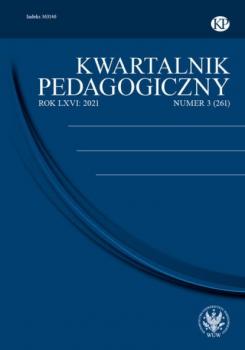ТОП просматриваемых книг сайта:
Группа авторов
Список книг автора Группа авторовАннотация
Аннотация
Аннотация
Clathrate Hydrates All-inclusive reference on clathrate hydrates from a molecular perspective Clathrate hydrates are crystalline water-based inclusion compounds many of which form at high pressures and low temperatures. Molecular science has provided the foundation for many areas of modern hydrate research and applications ranging from desalination processes to flow assurance in oil and gas pipelines. Clathrate Hydrates provides detailed information on the molecular science aspects of hydrate research, covering the structural, compositional, spectroscopic, thermodynamic, and mechanical properties of clathrate hydrates as well as simulation methods and selected engineering applications. Edited and authored by recognized leaders in the field, this comprehensive resource introduces readers to clathrate hydrates and reviews the state-of-the-art of the field. In-depth chapters address different areas of specialization such as characterization of clathrate hydrates using NMR spectroscopy, infrared and Raman spectroscopy, and X-ray and neutron diffraction and scattering. Highlights recent developments in clathrate hydrate research and applications such as natural gas recovery, desalination, and gas separation Reviews various molecular simulation methods for characterizing clathrate hydrates, including quantum mechanical calculations and Monte Carlo results Contains tables of known guest molecules, summaries of structural and physical properties, and different classes of clathrate hydrate phase equilibria Introduces unconventional guest-host interactions, related non-hydrate clathrates, and space-filling cages using the Frank-Kasper approach Covers the molecular motion of guest and host molecules and the relationship between cage geometry and guest dynamics Presents the rate and mechanisms of hydrate formation and decomposition from both macroscopic and microscopic points Clathrate Hydrates: Molecular Science and Characterization is an indispensable reference for materials scientists, physical chemists, chemical engineers, geochemists, and graduate students in relevant areas of science and engineering.
Аннотация
INDUSTRIAL INTERNET OF THINGS (IIOT) This book discusses how the industrial internet will be augmented through increased network agility, integrated artificial intelligence (AI) and the capacity to deploy, automate, orchestrate, and secure diverse user cases at hyperscale. Since the internet of things (IoT) dominates all sectors of technology, from home to industry, automation through IoT devices is changing the processes of our daily lives. For example, more and more businesses are adopting and accepting industrial automation on a large scale, with the market for industrial robots expected to reach $73.5 billion in 2023. The primary reason for adopting IoT industrial automation in businesses is the benefits it provides, including enhanced efficiency, high accuracy, cost-effectiveness, quick process completion, low power consumption, fewer errors, and ease of control. The 15 chapters in the book showcase industrial automation through the IoT by including case studies in the areas of the IIoT, robotic and intelligent systems, and web-based applications which will be of interest to working professionals and those in education and research involved in a broad cross-section of technical disciplines. The volume will help industry leaders by Advancing hands-on experience working with industrial architecture Demonstrating the potential of cloud-based Industrial IoT platforms, analytics, and protocols Putting forward business models revitalizing the workforce with Industry 4.0. Audience Researchers and scholars in industrial engineering and manufacturing, artificial intelligence, cyber-physical systems, robotics, safety engineering, safety-critical systems, and application domain communities such as aerospace, agriculture, automotive, critical infrastructures, healthcare, manufacturing, retail, smart transports, smart cities, and smart healthcare.
Аннотация
Am Ende des Zweiten Weltkriegs kamen 14 Millionen Menschen aus dem Osten des damaligen Deutschen Reiches nach Westdeutschland. Wie war die Flucht 1945 durch zerbombte Städte, Kraterlandschaften und Trümmerwüsten bei minus 20 Grad? Wie war sie als Kind, als Mutter mit kleinen Kindern? Lange Jahre wurden diese existentiellen Erschütterungen, die Gewalterfahrungen, die eine Flucht bedeutet, in unserem Land zugedeckt. Höchste Zeit, die erzählen zu lassen, die noch erzählen können.
Die Bilder und Berichte von den heutigen Flüchtlingen rufen bei vielen Menschen in Deutschland tiefe Erinnerungen wach. Ihre Bilder sind 70 Jahre alt. Endlose Kolonnen flüchtender Frauen und Kinder auf eisigen Straßen und Wegen, ein zusammengebrochenes Schienennetz, verzweifelt wartende Menschen an überfüllten Notunterkünften. Heide Scherer hat Kriegsmütter und Kriegskinder nach ihren Fluchterlebnissen aus dem Winter 1945 befragt. Einige Interviewpartner berichten ihre Geschichte zum allerersten Mal außerhalb ihrer Familie. Sie tauchen ein in diese Zeit, werden wieder die Flüchtenden von damals. Es kostet sie Kraft, das Wiedererwachen der Erlebnisse zuzulassen. »Aber wir haben es geschafft. Wir haben mit unserer Familie überlebt.«
Die Bilder und Berichte von den heutigen Flüchtlingen rufen bei vielen Menschen in Deutschland tiefe Erinnerungen wach. Ihre Bilder sind 70 Jahre alt. Endlose Kolonnen flüchtender Frauen und Kinder auf eisigen Straßen und Wegen, ein zusammengebrochenes Schienennetz, verzweifelt wartende Menschen an überfüllten Notunterkünften. Heide Scherer hat Kriegsmütter und Kriegskinder nach ihren Fluchterlebnissen aus dem Winter 1945 befragt. Einige Interviewpartner berichten ihre Geschichte zum allerersten Mal außerhalb ihrer Familie. Sie tauchen ein in diese Zeit, werden wieder die Flüchtenden von damals. Es kostet sie Kraft, das Wiedererwachen der Erlebnisse zuzulassen. »Aber wir haben es geschafft. Wir haben mit unserer Familie überlebt.«










